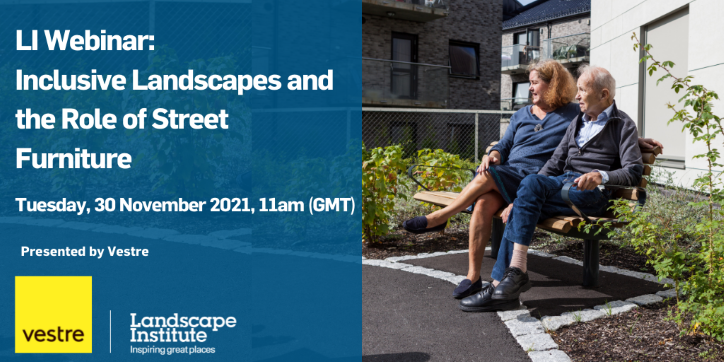Inclusive landscapes and the role of the street furniture
The CPD from Vestre in November 2021 considered the needs of users of the external environment in terms of accessibility and inclusivity. These wide-ranging requirements must be met if truly sustainable facilities are to be provided, where everyone can thrive. Encompassing social, environmental, and physical aspects, this is a vast subject that requires consideration at both a broader level and also a focus on the detailed needs of specific user groups. The information provided enables designers and managers to ensure they are acting in accordance with the requirements of BS8300-1:2018 and The Equality Act 2010.
An overview of the need for inclusive and accessible furniture was provided, with key points to consider when designing outdoor environments that are supportive of all users. It’s understood that many elements of furniture can greatly improve people’s quality of life by providing facilities to rest, park a bicycle, or enjoy more greenery in an urban area. However, all these opportunities for seating, cycle parking, litterbins etc come with specific accessibility requirements and these were discussed in terms of users with, for example, reduced mobility or impaired vision. There is much to consider around ergonomics and dimensions, backrest/armrest details, materials, tonal contrast, comfort, and even post Covid design – to name just a few of the points covered.
In the simplest of ways, a bench offers so much for both the physical and mental wellbeing of many communities, including the potential to combat the modern-day epidemic of loneliness. Yet this one element is also often considered a blight and magnet for anti-social behaviour. Current issues around the provision of furniture, such as hostile design and other measures that increase broader inequalities in public spaces (for instance around gender), were also considered, along with proposals to counter these.
View the webinar here.

